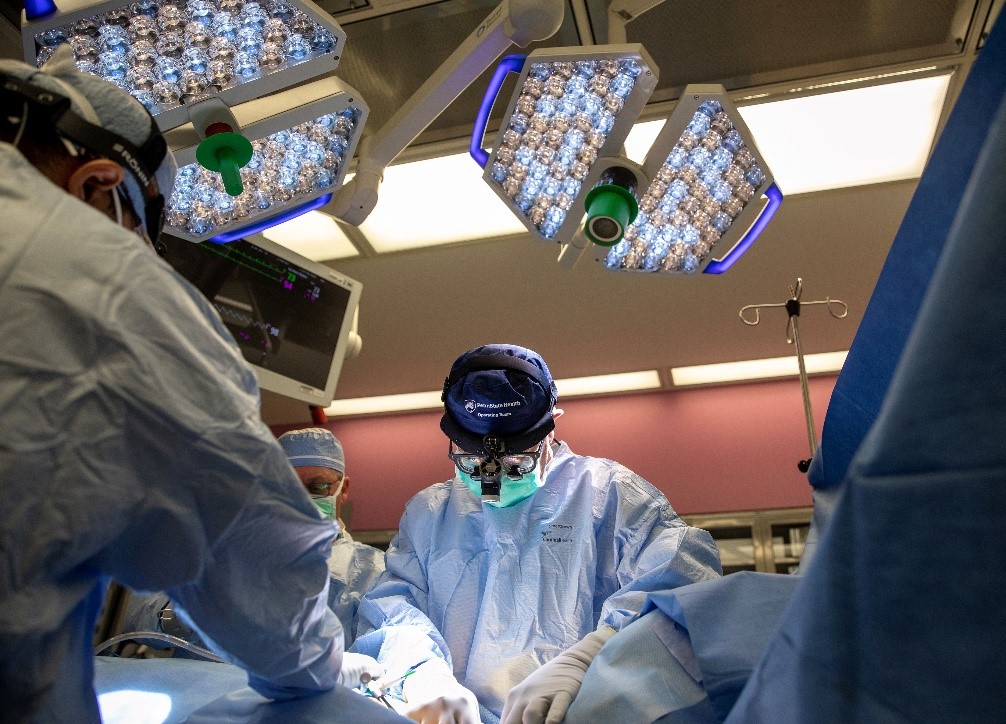Penn State Neuroscience Biorepository enhances neurological disease research

Penn State College of Medicine researchers are collaborating to collect, store and distribute biological specimens to advance neuroscience research. Founded in 2016, the Penn State Neuroscience Biorepository has collected more than 1,000 biological samples from consenting patients, including 170 patients diagnosed with glioblastoma, an aggressive, uncurable disease and focal point of research at Penn State Neuroscience Institute.
Biorepositories, or biobanks, are the collection, storage and distribution of biological specimens used to facilitate basic science, drive clinical research and promote translational studies on a wide range of human diseases. Biorepositories have been in use for over a century in the United States. Historically, they’ve been maintained by the U.S. Department of Defense since the Civil War. However, today both governmental and non-governmental institutions manage biorepositories to understand disease pathology better and improve patient care.
“The idea behind [the biorepository] is to obtain biological specimens and use that information to produce some novel scientific work — work that can help patients and researchers in the future,” said Elias Rizk, MD, division chief, Department of Pediatric Neurosurgery at Penn State Health Milton S. Hershey Medical Center and associate professor of neurological surgery at Penn State College of Medicine. “Not every tumor is the same, not every patient is the same, and there’s some unique diagnostic or therapeutic benefits that can be unlocked by having access to this treasure trove of information.”
There are four types of biological samples collected at the biorepository from a highly diverse patient population: tissue, cerebral spinal fluid (CSF), mouth swabs and removed medical device samples. These specimens are available for use by investigators through a specific protocol approval process, and de-identified data is then released through an honest broker system. In addition, relevant demographic, clinical and outcome data are stored in a REDCap database. Brad Zacharia, MD, co-director of the neuro-oncology program at Penn State Health, oversees and maintains the campus biorepository.
“This is a unique situation,” Rizk said. “Not many other places in the country have this amount of data from patients. And it’s not just neuro-oncology, we have sampled vascular patients, patients with neurological diseases and ALS or multiple sclerosis, so there are lots of different types of pathologies housed in this biorepository.”
Gaining a better understanding of glioblastoma
One of the main focuses of the neuroscience biorepository is the study of glioblastoma (GBM), a fast-growing, cancerous tumor that can form in the brain or spinal cord. Although considered rare, it accounts for 16% of all brain malignancies with few treatment options available.
“GBM is usually a terminal disease,” Rizk said. “There are not many treatment options available for such a condition … and the reason is there’s not much available access data on this type of tumor specimen regionally, nationally or internationally.”
The biorepository team has the unique opportunity to follow patients receiving the whole lifecycle of care at Hershey Medical Center and collect corresponding samples to aid in research. Currently, the biorepository has access to several hundred GBM specimens from the tumor itself, from spinal fluid, or from the saliva of the patient. In addition, it facilitates 15 research protocols studying causes, behavior, biomarkers and treatment techniques for GBM. Three of these projects are in collaboration with the Johns Hopkins School of Medicine, Caris Life Sciences and University Health Network of Toronto, CA, with the collective goal of finding a cure for this aggressive brain tumor.
“GBM is very complex and requires a lot of data points to try and unlock that information, and with big data, you have the ability to sift through genetic information, and not each one will be similar to the other, but there will be unified themes that can only be unlocked when you have more data points,” Rizk said.
Increasing knowledge of neurological diseases
The biorepository is also used to conduct research on a wide range of other neurological diseases, thanks in part to biosamples collected from patients in the community.
“We study brain metastases, looking at diagnostics of CSF to determine who is responsive to treatment versus the population that is resistant to treatment,” Rizk said. Some of the other research projects underway include:
- Causes of ventricular catheter obstruction
- Central nervous system lymphoma
- Identifying biomarkers to improve brain tumor diagnostics
- Peripheral nerve sheath tumors
- The neuropathology of Moyamoya disease
The future of patient care
The Penn State Biorepository has made great strides in the last decade toward better understanding and combating neurological diseases, but Rizk sees more work and collaboration on the horizon.
“It takes time to build the foundation to be able to work with collaborators so we can grow that population even further by putting in more individuals who are able to collect those samples or places to house those samples and putting the word out there,” he said. “The whole rubric on diagnosing something based on imagery is 1950’s technology, and the biorepository offers such a powerful ability to unlock new ways to understand these diseases. That’s the power of this repository. It’s global, with the mission to advance science and neuroscience.”
If you're having trouble accessing this content, or would like it in another format, please email Penn State Health Marketing & Communications.
